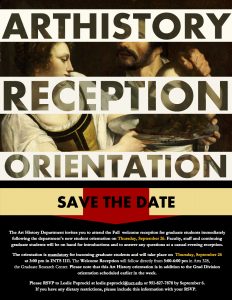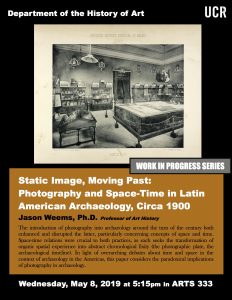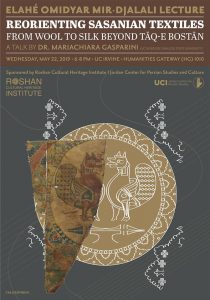Two New Faculty Opportunities
Assistant Professor in Art and Material Culture of Mexico and the Hispanic Americas (Circa 1500-1900)
Assistant Professor in East Asian Art History
Review of completed applications will begin December 13, 2019, and continue until the position is filled.
Positions begin July 1, 2020.
Visit Employment Opportunities for more information.

 Art History Graduate Welcome Reception
Art History Graduate Welcome Reception
 Work In Progress Series: Professor of Art History, Jason Weems, Ph.D.
Work In Progress Series: Professor of Art History, Jason Weems, Ph.D. Elahe Omidyar Mir-Djalali Lecture
Elahe Omidyar Mir-Djalali Lecture